asset light
description: a business model where a company owns fewer capital assets compared to its operations, often relying on outsourcing and leasing
32 results
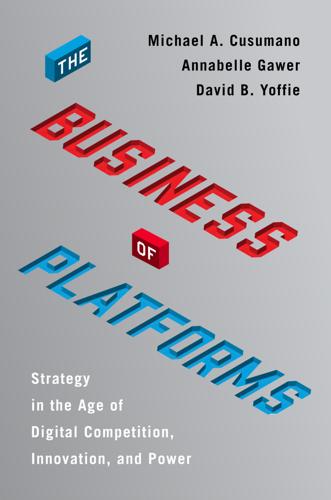
The Business of Platforms: Strategy in the Age of Digital Competition, Innovation, and Power
by
Michael A. Cusumano
,
Annabelle Gawer
and
David B. Yoffie
Published 6 May 2019
For example, there was a raging debate in August 2018 when Facebook, Apple, Spotify, and YouTube moved to ban Alex Jones, the U.S. right-wing radio host and political commentator of InfoWars.32 In effect, digital platforms were trying to have it both ways: Take advantage of the fact they were not publishers to escape responsibility and, at the same time, increasingly acting like publishers in deciding which views and people were permitted on their platforms. The Workforce: Not Everyone Should Be a Contractor One of the most attractive features of platforms for financial investors is that they can be asset-light. Uber does not own taxis. Airbnb does not own apartments or houses. OpenTable does not own restaurants. Instead, most platforms connect people or companies with valuable assets and skills to other people and companies who want access to those assets and skills. While asset-light platforms potentially provide highly leveraged returns to investors, they create another challenge for human capital: How should platforms manage a workforce largely composed of “independent contractors”?
…
Or perhaps the secret will actually be the physical network of warehouses and delivery vehicles that Amazon invests in to complement its digital platforms.40 The leading Chinese platform companies also have used their digital expertise as well as knowledge of local markets and institutions to make it difficult for global platforms like Amazon to compete in China. Alibaba and Tencent started with “asset-light” platform business models: Their early operations were purely digital with modest capital requirements. But, similar to Amazon in the United States though at a somewhat lesser magnitude, Alibaba and Tencent have turned e-commerce in China into a scale game. In 2018, Taobao Marketplace controlled about 60 percent of China’s B2C e-commerce.
…
They may adopt other measures, such as forming coalitions or using subsidies to help tip a market toward their platform when multiple platforms compete. Remember, though, we learned from Apple that a platform does not have to get a majority of industry revenues to get a majority of industry profits as long as it focuses on the most profitable customers. Third, platforms enable “asset-light” business models by connecting different market actors and leveraging network effects. As we discuss in Chapter 3, an innovation platform can facilitate and then take advantage of new products and services built by third-party firms that continuously make the core product or service—the platform—more valuable.

Inner Entrepreneur: A Proven Path to Profit and Peace
by
Grant Sabatier
Published 10 Mar 2025
Or maybe the industry requires licensure, which is a barrier to new competition entering the market. It’s well known, for example, that trade businesses like plumbers and electricians can grow much larger because practitioners require specific licensing and training. 7. An asset-light business You know that I’m partial to asset-light businesses. I don’t want a company with a warehouse full of inventory or many repairman vehicles. I like running my business from anywhere and minimizing the headaches. Buying a business with a ton of trucks or equipment that needs to be maintained can add a lot of headaches and management to the operations.
…
SaaS Business A Software as a Service (SaaS) business sells software that customers access over the internet through a subscription. Popular SaaS businesses include Dropbox, Slack, Salesforce, and many others. As with any subscription business, a SaaS business can generate significant recurring revenue if you find product-market fit and add value to users. It’s also an asset-light business that you can continue to work on and update from anywhere in the world. Some SaaS businesses have achieved remarkable success. For instance, Salesforce excels in helping companies manage their customer relationships, boosting their efficiency and profitability. During the pandemic, Zoom gained fame for its user-friendly online meeting platform, which was in high demand.
…
Just make sure to price your product high enough to cover those fees and still generate the profit you want to see. The more you sell of something, the less expensive it typically becomes to produce it. This is true for physical products (since it’s generally less expensive to order products or materials in higher quantities), but especially for asset-light businesses like digital products or service businesses. There may still be some up-front costs to running these—like software to design your Etsy printables or hosting fees for your website—but they are spread out over all your units. Another way to determine how to price your product is to reverse engineer the price based on how much profit you want to earn.
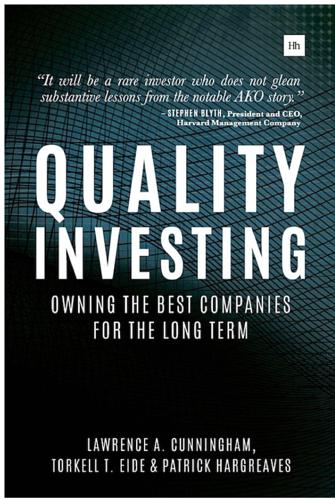
Quality Investing: Owning the Best Companies for the Long Term
by
Torkell T. Eide
,
Lawrence A. Cunningham
and
Patrick Hargreaves
Published 5 Jan 2016
Although studies suggest that abnormal returns tend to fade over time in aggregate, there are regular exceptions to this rule – outliers able to buck the statistical trend of mean reversion and sustain superior returns over the long term.13 Asset turns Asset turns are, in effect, a measure of a company’s asset intensity. Or, put another way, how much capital needs to remain in the business in order to generate sales. Asset-light industries are attractive since they require less capital to be deployed in order to generate sales growth. The finest examples are franchise operations, such as Domino’s Pizza, where growth is funded by franchisees rather than by the company. Other instances include software businesses, such as Dassault Systèmes, a leading European developer of design software.
…
Incremental revenue from volume increases tends to have a minor impact on gross margin. But total costs, including those associated with the increases in working capital and capex that higher volumes entail, will inevitably rise to some extent as volume grows. As a result, volume growth is particularly valuable for asset-light businesses boasting high margins and those with high operating leverage, such as pharmaceutical or software companies. Cyclical market growth Cyclicality is a double-edged sword. Certain companies and industries tend to enjoy substantial growth during periods of economic expansion. Exact relationships vary widely across businesses and sectors; oil cycles tending to be long, agriculture cycles deep, and consumer cycles shallow.
…
Subscription and service revenue tends to require little capital investment to support growth. At one extreme, software companies update product files at the flip of a switch; even manufacturing companies typically produce spare parts using machinery and equipment already in operation. Specific service activity is also asset-light – usually personnel and a simple set of tools. The combination of potentially negative working capital, rapid cash flows, and low capital expenditure to support growth is rare in business – but is a common feature of the recurring revenue model. Many companies enjoy some degree of recurring revenue and many managers strive to increase that component of overall operations, but a small amount of recurring revenue does not necessarily make a company great.

The Sharing Economy: The End of Employment and the Rise of Crowd-Based Capitalism
by
Arun Sundararajan
Published 12 May 2016
Her supplement emphasized how we are now reimagining everything from interfaces to lending in a way that foreshadowed the ascent of an “asset-light” generation. In settings that ranged from commercial real estate and corporate labor to personal banking, travel, entertainment, and transportation, Meeker illustrated a range of digitally enabled business models and consumer experiences that were catalyzing the descent of our industrial-era structures. A series of juxtaposed contrasting images in her PowerPoint slides pictured the stark differences between the so-called asset-heavy versus asset-light generations: an elderly vinyl enthusiast amid boxes and boxes of records versus screenshots from the streaming music services Spotify, Pandora, and iTunes; a high-rise Ramada Inn versus a tree house for rent on the peer-to-peer accommodation platform Airbnb; full-time workers seated ear-to-ear in endless rows versus an Internet-based freelancer marketplace.
…
As straightforward as an illustrated children’s book, the message from Meeker’s slides was clear—stuff owned for one’s personal use, brick-and-mortar institutions, hard currency, and on-site, salaried, permanent jobs were on their way out, and shared access, virtual exchange, digital money, and flexible on-demand labor were in. At the time I leafed through Meeker’s slides, I knew that her prediction of an “asset-light” generation was merely one slice of a broader economic and social change that was already well under way—a radical shift toward new ways of organizing economic activity that will become increasingly dominant in this century. The assortment of behaviors (and organizations) that many of us optimistically call the “sharing economy” are early instances of a future in which peer-to-peer exchange becomes increasingly prevalent, and the “crowd” replaces the corporation at the center of capitalism.
…
See also Accommodation platforms blurring of boundaries and, 141–142 convenience of, 128 ease of using, 124 entrepreneurial nature of, 194 externalities, 140 financing of, 25 founding and growth of, 7–9, 131 gift aspect of, 39–40 gift economy aspects, 35 hotel taxes and, 186 impact on hotel industry, 121–122, 129, 216–217n11, 219n3 increased variety and consumption with, 121 local network effects, 120 as microentrepreneurship, 125 as micro-outsourcing, 77 peer regulation and, 151–152 pricing, supply, and merchandising, 194–195 regulation and, 131–136, 154, 155 search capability, 97 shared redistribution, 82 trust and, 61, 62, 64, 65, 98, 145, 147 Alaska Permanent Fund, 190 Alibaba, 48, 97, 99 Alone Together (Turkle), 45 Altavista, 96 Amazon, 37, 47, 54, 57, 91, 203 logistics, 99 market value, 96 price search comparisons and product offerings, 112 search capability, 97 user-generated reviews, 147 Walmart and, 98–99 American Hotel and Lodging Association (AHLA), 134–135 American Medical Association, 153, 192 Amtrak, 12 Andreessen, Marc, 59–60, 87 Andreessen Horowitz, 25, 87 AngelList, 42–43 Apple, 2, 55, 203 iTunes, 54, 56, 57, 91, 93 Apple Core Hotels, 121 Arthurs, H. W., 184 Artists Against Piracy, 58 Aspen Institute, 157, 179, 187 Asset-light generation, 2 Automation, 164–167 BackFeed, 199 Bandwagon, 44 Bapna, Ravi, 13–14 Barnes, Peter, 189 Barrett, Sara, 106 Barter economy, 36–37 Bauwens, Michel, 32–33, 99–100, 210–211n32 BazaarBay, 97 Beck, Jessica, 11 Beck, Ulrich, 189 Benjamin, Robert, 69, 72–74 Benkler, Yochai, 30–32, 33, 35, 36, 37, 199, 210n19 Bennett and Coleman, 25 Berger, Alan, 15 Berlingen, Flore, 23 BestBuy, 57 Bilateral reciprocity, 36–37 Billock, Jennifer, 39 Bitcoin, 52, 59, 82, 86, 96 and the blockchain, 86–89 as decentralized peer-to-peer exchange, 87–91, 100–101 mining, 87, 90, 101 BitTorrent, 92, 97, 100 BlaBlaCar, 6, 12–13, 44, 48, 203, 204.
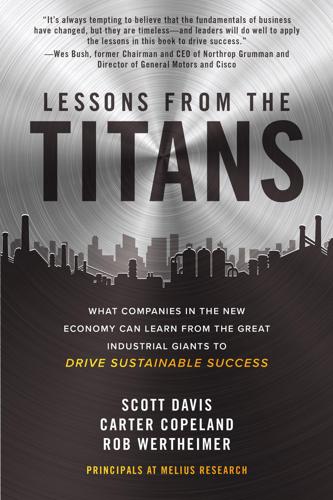
Lessons from the Titans: What Companies in the New Economy Can Learn from the Great Industrial Giants to Drive Sustainable Success
by
Scott Davis
,
Carter Copeland
and
Rob Wertheimer
Published 13 Jul 2020
The company also needed to grow faster than what his inherited portfolio could deliver. The portfolio needed a drastic makeover, and the only way to get there was to do M&A far away from its core. Jellison wanted to focus explicitly on high-margin, high cash flow assets as far away from the oil and gas industry as possible. He wanted asset-light businesses with cash flow that increased over time. This involved substantially higher levels of debt leverage in the process, all of which required approval from Roper’s risk-averse board. Convincing the board to be aggressive was no easy task. Roper’s legacy board was conservative, and Jellison had not yet been named chairman.
…
CEO Neil Hunn and CFO Rob Crisci trained diligently under Jellison and use the same simple philosophies that worked for the company for nearly two decades. The concept of CRI may not work for every company or every asset base, but it works for Roper. If nothing else, it enforces discipline around the M&A funnel. High-quality assets that are asset light and generate cash rise to the top. That focus is time-tested, and there is no reason to believe it will change. Roper is no longer a traditional industrial; yet its past portfolio decisions may not define its future either. Like Danaher, it has gravitated capital to the most attractive areas. Danaher saw the opportunity in healthcare, and Roper in software.
…
In doing so it raised its margins substantially, widening the gap with competition, creating tens of thousands of good jobs, and professionalizing a scattered and entrepreneurial industry along the way. There is a lesson for the new economy here. Designing a breakthrough software app at Uber created an industry, but managing an extremely large, asset-intensive chain is something else, and the costs of doing so poorly are creeping up. Uber may not own cars, but that doesn’t make it an asset-light business model overall. Equipment rental is asset sharing, old economy style. It differs in several ways from the recent versions created by Uber, Airbnb, and WeWork. First, it doesn’t shy away from owning assets: it’s a hardware management business, not just software. Second, the leaders employ people in good jobs with good training, instead of using contractors.
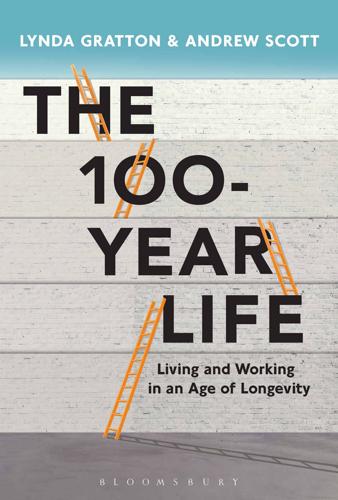
The 100-Year Life: Living and Working in an Age of Longevity
by
Lynda Gratton
and
Andrew Scott
Published 1 Jun 2016
Jane in 2019: Jane enters her 20s knowing that there is a good chance she will live for 100 years and it is this probability on which she bases her decisions. She decides to put off making any immediate major commitments and instead to explore her options. So after graduating from university with a degree in Modern History, she decides to travel. At this stage in her life she is asset-light and happy to engage in casual work. This is an exploration phase. As she travels across the continents, she meets many different people and begins to establish the broad network of friends and acquaintances that will create such a strong foundation for her transformational assets (first phase).
…
Travelling light The major investment of the explorer and independent producer stage is in intangible assets – particularly transformational assets. So during these periods, financing is always going to be tricky. That is why developments in the technologies of the sharing economy are so interesting.19 The sharing economy is a great way of enabling people to remain asset-light or to bring income in to finance their asset accumulation. Sharing platforms such as Airbnb, Simplest, Lyft or even Dogvacay are all examples of an emerging economy where people share capacity of assets that they may have purchased or created. So not only is it possible to put off making big financial decisions, it is also possible to reduce the exposure to these financial decisions.
…
In many developed countries this is an age group that feels betrayed by older generations. They find themselves saddled with higher levels of student debt, entering a labour force where getting their first job is increasingly competitive, and living in cities where house prices are beyond their reach. As a consequence, many have little choice but to be asset-light and imaginative about how they achieve economic self-sufficiency. As this age group creates options, postpones commitments and remains flexible, they are displaying features traditionally associated with adolescence; they are, in other words, a great example of the juvenescence and neoteny we described earlier.

The Network Imperative: How to Survive and Grow in the Age of Digital Business Models
by
Barry Libert
and
Megan Beck
Published 6 Jun 2016
These great innovators have few tangible assets relative to their size, and yet they enjoy some of the highest equity values in the world. Starwood Hotels is another great example. With more than twelve hundred properties under management, Starwood is currently pursuing an asset-light strategy, selling about $1.5 billion in property from 2013 to 2015. The hope is that an asset-light strategy will enable greater market flexibility and focus on the core business, which is property management and not real estate. Principle 2, Assets: From Tangible to Intangible The second principle is to move from tangible to intangible assets.

Boom: Bubbles and the End of Stagnation
by
Byrne Hobart
and
Tobias Huber
Published 29 Oct 2024
Indeed, in fields ranging from office software to exercise equipment to entertainment, single purchases have been replaced with recurring subscriptions. Second, companies can move high-risk, operationally intensive work off their balance sheets—think of electronics companies outsourcing assembly or hotel chains shifting to an asset-light franchising model. This essentially results in a public market that skews toward companies that will achieve higher-than-average valuations for a given level of earnings. More promising is the phenomenon of big tech representing a growing share of market indices, particularly in the US. For that to be a positive leading indicator, though, more of the world’s human activity needs to be computer-mediated and monetized through ads.
…
A 70-year logarithmic chart makes advances in chip density look like a smooth process, but each advance was a discrete, step-function change. Companies that were even a few months early or late would miss out on sales but would still bear the fixed cost of research and development as well as their capital expenditures. In the early days of the chip industry, this was a survivable mistake. Chip companies were asset-light, since most of their expenses were related to employee compensation, some of which was granted in the form of stock options. 232 One reason the industry was so adaptable was that a number of people with just a few years of experience at one successful company had both the track record and the financial means to launch a competitor.
…
The company also strove to commoditize the design business—if there were more companies inventing new chips and fewer companies manufacturing them, they reasoned, the manufacturers would be able to set their own price. TSMC’s strategy effectively redefined the market, creating a separation between the capital-intensive business of fabricating chips and the more asset-light business of designing them, a model that was ultimately embraced even by Intel. Today, the industry comprises a complex supply chain, in which multiple companies at multiple steps operate at the frontier of what’s physically possible. The end of Moore’s law? Frontiers have a way of disappearing, though.
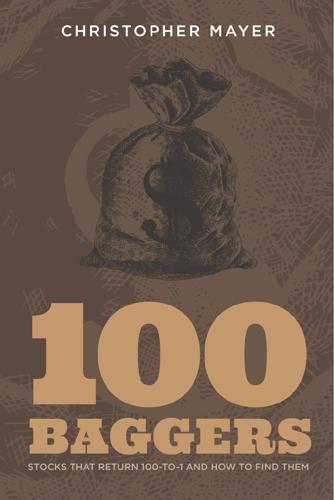
100 Baggers: Stocks That Return 100-To-1 and How to Find Them
by
Christopher W Mayer
Published 21 May 2018
Asset-heavy businesses generally earn low rates of return—rates that often barely provide enough capital to fund the inflationary needs of the existing business, with nothing left over for real growth, for distribution to owners, or for acquisition of new businesses. This idea is critical. If you don’t understand this, you should read through the example again. Work it out on paper for yourself. Change the numbers around if you wish. It’s important to understand the dynamics. In a world of monetary depreciation, the asset-light company wins. Or put another way, monetary depreciation favors the asset light. The irony for the big-picture crowd is though they tend to shun stocks, when they do get involved they favor the worst kinds. MISCELLANEOUS MENTATION ON 100-BAGGERS 1 53 To quote another great investor, John Maynard Keynes: “The difficulty lies not in the new ideas but in escaping from the old ones.”
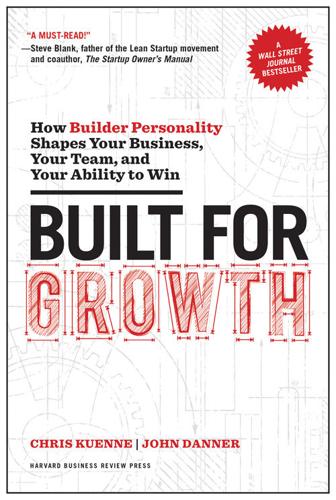
Built for Growth: How Builder Personality Shapes Your Business, Your Team, and Your Ability to Win
by
Chris Kuenne
and
John Danner
Published 5 Jun 2017
The two largest players in the space, Waste Management and Republic Industries, generate much of their profits through owning landfills and charging customers a tipping fee for dumping each ton of garbage into the earth. With such financial incentives, Morris worried how the industry would ever be motivated to divert more garbage into the recycle stream. Righting the wrongs of the waste business became his mission and that of the company he founded and runs, Rubicon Global. He created what is known as an asset-light business, in which his firm owns no trucks or landfills, but rather provides a brokering system, as Uber does with passenger cars. Morris aspired to help large customers like Wegmans Food Markets and Walmart divert more of their garbage to recycling. His company studied the contents of their dumpsters and bid out contracts to haulers who specialized in each kind of material—one hauler would take the glass, another the cardboard, and so on.
…
Index Accenture, 193 accountability, 184 affinity marketing, 46–47 Airbnb, 155, 171 Akamai, 62 Alba, Jessica, 88–90 Alibaba, 128–129, 159 Alphabet, 19 Amazon, 5 Amazon Web Services, 15, 73–74, 80, 133 American Specialty Foods, 131 Amicus, 125, 139, 212 APCO Worldwide, 118–120, 138, 139 Apple, 17, 154 AppNexus, 58–60, 65–66, 74, 220–221 ARC Document Solutions, 129–130 Arnold & Porter, 118 Arvai, Peter, 127 asset-light businesses, 94–95 autocratic behavior, 80 Bai Brands, 4–5, 32, 41–42, 48, 52 customer dynamic at, 39 Bain Capital, 104 Bank of America, 47 Benchmark Capital, 190–191 Ben & Jerry’s, 6, 93, 97, 99, 222–223 Berners-Lee, Tim, 62 Berta, Norbert, 15, 64, 77–78, 195–196 Bezos, Jeff, 5, 73 Bischof, Chris, 137 Black, Benjamin, 73 Blakely, Sara, 5, 62 Blecharczyk, Nathan, 171 Blumberg, Matt, 45, 52 Bonfigli, Mark, 69–70, 71, 80, 222 Box, 113 Bradley, Bill, 41 Breitman, Steve, 15, 35 Briggs, Katharine, 22, 236 Brin, Sergey, 18 Bristol-Myers Squibb, 20 Brulant, 40–41 buffers, delegating to, 84–85 Builder Personalities, 3–7.

Humans as a Service: The Promise and Perils of Work in the Gig Economy
by
Jeremias Prassl
Published 7 May 2018
* * * 52 Lost in the Crowd consumer–employer–worker triangle, which is precisely what the notion of the on-demand worker as an independent ‘micro-entrepreneur’ is designed to ‘disrupt’. A complete lack of employment protection (and the significant cost savings that come with it) is crucial to on-demand, ‘asset-light’ operations’ offers of cheap and abundant services. It is not difficult to find instances of genuine entrepreneurship in the gig economy: think of a plumber using TaskRabbit to grow her business. When we look at platform work as a whole, however, the entrepreneurship narra- tive is much more difficult to sustain.
…
As regards the first of these arguments, Uber’s emphasis on autonomous vehicles has increasingly been questioned by experts from both technological and eco- nomic perspectives: the company’s efforts seem to lag significantly behind competitors’ technological advances.75 In any event, why would Uber replace its current asset-light model, under which drivers bear the full cost of pro- viding cars, petrol, and their time, with a massive investment in an expensive fleet of self-driving cars? As the Financial Times concludes, ‘this sort of think- ing fundamentally mis-assesses the economics of the car market’.76 Workers, too, suffer from the gig economy’s threat to innovation.
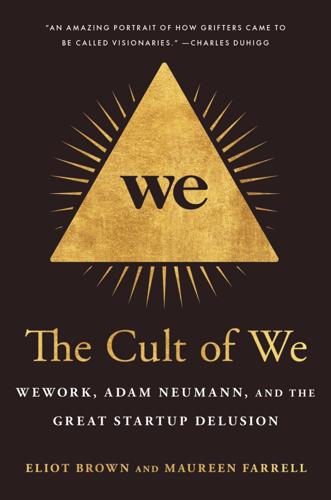
The Cult of We: WeWork, Adam Neumann, and the Great Startup Delusion
by
Eliot Brown
and
Maureen Farrell
Published 19 Jul 2021
Investors saw a physical social network with amazing growth rather than a collection of people paying market rents for office space that had losses growing just as fast as revenue. When Neumann told them WeWork was like Uber and Airbnb, the investors focused on the few parallels between those businesses rather than numerous fundamental differences, including how Airbnb and Uber are asset light and don’t have costly fifteen-year leases for their homes and cars. These investors were considered the smart money—the ones investing on behalf of wealthy families or endowments or pensions who had their pick of advisers. But in a world awash in cash, these investors feared missing out on the next big, highly lucrative idea.
…
The idea was that ARK—using funds raised from real estate investors around the globe—would treat WeWork more like a hotel operator, like Marriott, which generally doesn’t own or lease any of its hotels. Instead, hotel landlords spend the money building out hotels and then pay a hotel company like Marriott to manage the building. It was their plan to become “asset light.” Neumann had financial engineering plans of his own. In addition to the benefits he saw in the business, ARK offered a way for him to get an even more lucrative remuneration package. He had staff devise a plan that would give him a personal ownership stake in the fund—one that came on top of the billions in paper gains he planned to see indirectly, as WeWork’s largest shareholder.
…
Even as their stock-sale-funded lives grew more luxurious, even as they used the company for unmistakably—and often extreme—personal gain, the couple frequently talked about how they were all part of the same family as their employees and investors. Earlier, after the purchase of their $15 million home in Pound Ridge, Rebekah Neumann boasted to an interviewer that “we believe in this new Asset Light lifestyle,” defined by fewer material goods. She added, “We want to live off of the land.” * * * — Like much of the We universe, the Neumanns’ blend of personal and professional crept outward. It wasn’t simply a matter of saving money. The Neumanns said they would happily reimburse the company for any staff hours spent on their personal projects.

Dear Chairman: Boardroom Battles and the Rise of Shareholder Activism
by
Jeff Gramm
Published 23 Feb 2016
Buffett had focused much of his career on buying asset-rich businesses for cheap. But American Express had basically no plants or equipment. Its value rested in its name, and Buffett surveyed banks, hotels, restaurants, and customers to determine that the scandal had not affected the brand.39 His research helped him recognize the immense power of an asset-light business model. Whereas asset-rich companies like Berkshire Hathaway required a lot of investment to operate efficiently, American Express’s travelers checks business actually created excess capital, a large float, between the time customers bought checks and used them. Because of the enduring power of the American Express brand, he likened the settlement with salad oil claimants to losing one dividend check in the mail—an annoyance, but by no means a catastrophe.40 What was Buffett’s “high-probability insight” on American Express?
…
See also Great Salad Oil Swindle Allied’s collapse and, 56, 57–58, 59 Buffett’s intervention position for, 47–48 Buffett’s investment in, 56–58, 60, 218–19 GM board of directors and, 112 as lender of last resort, 50–52 unlimited liability, 56, 57 warehousing subsidiary, 53–56, 58, 59, 218–19 American Lawyer, 86–87 Anchor Hocking, 79 Anti-Darwinian theory of management, 72–73 anti-takeover statutes, 87, 147–48, 177, 187, 243 antitrust violations, 30, 44, 67, 117, 267n66 Apple, xvi, 72, 139–40, 164, 171, 200 arbitrage and arbitrageurs, 75, 77–78, 93, 123, 192 asset-light business model, 58 Auletta, Ken, 79 A. W. Jones, 3, 148, 256n7 Baird & Warner, 78 Baker, Fentress & Company, 172–74, 189, 240. See also BKF Capital Group Bankers Trust, 55 Barron’s, xi, 22 Bartlesville, Oklahoma, 73–74, 84–85 Baruch, Bernard, 17 Bass brothers, 74, 262n16 Bath Iron Works, 62 Bayswater Realty, 78 Beard, Anson, 175, 182, 186, 189, 240 bear hug letters, 69–70, 81, 93, 149 Bear Stearns, 239, 241–42 Berkshire Hathaway annual letters, xx, 258n45 annual shareholders’ meetings, 45, 46, 141–42 as Buffett’s legacy, 199 Buffett’s portfolio and, 57 business model of, 46 Berle, Adolf, 194 Beverley, Robert, 153 B.

The Firm
by
Duff McDonald
Published 1 Jun 2014
As John Byrne pointed out in BusinessWeek, McKinsey was knee-deep with Enron in pretty much everything that made the firm distinctive, “[stamping its] imprimatur on many of Enron’s strategies and practices, helping to position the energy giant as a corporate innovator worthy of emulation.”16 In just six years, the McKinsey Quarterly mentioned Enron 127 times. Here’s how much McKinsey loved Enron. One: The firm endorsed Enron’s asset-light strategy. In a 1997 edition of the Quarterly, consultants wrote that “Enron was not distinctive at building and operating power stations, but it didn’t matter; these skills could be contracted out. Rather, it was good at negotiating contracts, financing, and government guarantee—precisely the skills that distinguished successful players.”
…
As far as McKinsey was concerned, “[deal-making] skills have become more important than scale or scope, and strategic insight and foresight more important than structural position.”17 It’s a statement that is baffling in its implication—that what matters is not what you actually are, but what you want to be. At Enron, the concept had finally trumped reality. This was nothing short of a McKinsey consultant’s dream result. Nearly all of Enron’s allegedly innovative approaches ended up playing a significant role in the firm’s collapse. Being asset-light left Enron with unsustainable debts. Being loose-tight excused a laissez-faire culture in which executives acted without oversight. Off-balance-sheet financing turned out to be a way to deceive investors and the IRS. Enron was a transformational player in the natural gas industry. It was successful because it was a first mover in the newly deregulated field of energy trading.

Taming the Sun: Innovations to Harness Solar Energy and Power the Planet
by
Varun Sivaram
Published 2 Mar 2018
Such a hybrid grid might rely on a backbone of long-distance transmission lines to link faraway regions and deliver renewable energy from the most sun-drenched, windswept regions. Supplementing these clean energy highways would be decentralized microgrids serving, for example, neighborhoods, military bases, or schools, all networked together into a smart grid. Retiring much of the expensive, overbuilt infrastructure of today’s grid could pay for both supergrids and asset-light microgrids. This hybrid grid model could weather the volatility of renewable energy both through the wide reach of its long-distance transmission backbone and the precise responsiveness of the decentralized smart grid. Although the supergrid and decentralized grid models are each radical departures in opposite directions from today’s power system, they might actually coexist in a truly advanced hybrid grid.
…
It would combine microgrids that efficiently use distributed energy resources to regulate supply and demand at the local level with long-distance transmission links that can shuttle power between faraway regions and access remote but rich renewable resources. And it would replace much of today’s existing, bloated grid that relies on expensive AC transmission and distribution infrastructure, relying on asset-light microgrids at the local scale and HVDC lines at the regional and global scales. Figure 8.4 Schematic of what a hybrid grid might look like. The left panel represents a continent-sized supergrid (pictured: the regional supergrid connecting Europe and North Africa proposed by DESERTEC). The symbols represent renewable energy generators, and the lines represent long-distance, HVDC transmission lines.
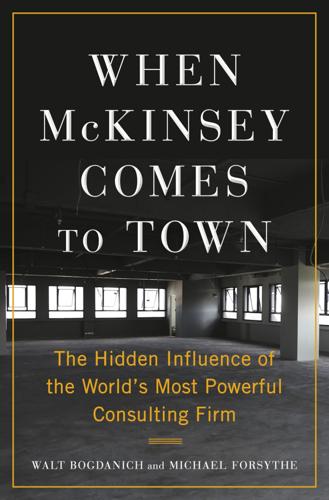
When McKinsey Comes to Town: The Hidden Influence of the World's Most Powerful Consulting Firm
by
Walt Bogdanich
and
Michael Forsythe
Published 3 Oct 2022
Skilling infused Enron with ideas he had learned at McKinsey, including the importance of periodically culling the herd. Either advance in the firm or leave. McKinsey called it “up or out.” At Enron it was “rank and yank.” McKinsey validated Enron’s strategy, including risk taking, securitizing loans to gas purchasers, and its “asset light” approach. As the McKinsey Quarterly explained, Enron became a world leader in private power generation “because it saw that profit did not depend on construction and operation skills, but on deal structuring and risk allocation.” Skilling had been enamored of securitization since his earliest days at Enron, so in 1990 he set out to find a banker who knew how to structure a securitization deal.
…
A B C D E F G H I J K L M N O P Q R S T U V W X Y Z A AAA insurance, 197 ABC TV, 68, 111 Abdulaziz, Omar, 252–56 Abdullah, King of Saudi Arabia, 246 Accelerating Claims Excellence, 197 addiction, 110–12, 114, 125, 127, 131–44, 278 aducanumab (Aduhelm), 67–69 aerospace industry, 102 Aetna, 53 Affordable Care Act (ACA, 2010), 62–63, 65, 273 Afghanistan War, 155–56 Africa, 101 African National Congress (ANC), 224–25 Afrika Korps, 258 Agarwal, Vishal, 166–67 AIG, 172, 188, 190 Aitken, Christopher, 12, 15 Alattas, Ahmad, 252 Albemarle, 158 Alberta, 164 Alcoa, 4 Aldridge, Jason, 191–92, 194, 203 Al-Elm Information Security Company, 256 Alexander, Caleb, 145 Al-Jubeir, Adel, 248 Al-Jubeir, Mazen, 248 Alkhedheiri, Sarah, 248 Allison, Andy, 61 Allstate, 191–95, 197–203, 212 Altria (formerly Philip Morris), 119–20, 125–27, 129 Altuve, José, 220 Alzheimer’s, 67–68 amaBhungane, 237, 279 American Academy of Pediatrics, 124, 129 American Express, 18, 40 American Journal of Public Health, 119, 132 American League, 216–20 Ameriquest, 187 Anderson, Roger, 175 Antarctica, 152 Anthem, 56 apartheid, 224 Apgar, Sandy, 243 Apple, 98, 100 Arab oil embargo (1973), 243 Arab Spring (2011–12), 245, 251 Aramco, 156, 163, 243–44, 247–48 Aris, Stephen, 261 Arkansas Medicaid program, 18, 57, 60–62 Arlington National Cemetery, 155 Arrizola, Jonathan, 6 Arrizola, Whitney, 6 Arrow, Kenneth, 264 Arthur Andersen, 205 Asia, 101, 164–65, 168–69, 185 Aspen Consensus, 154–55 Aspen Ideas Festival, 149–51, 153–55, 160, 166 Assan, Jeff, 220 “asset light” approach, 207 Associated Press, 105 AT&T, 47–48 Athletic, The, 211, 218–19 Atlantic, The, 38 Atlas Shrugged (Rand), 9 AT Medics, 274 Attenborough, David, 150 austerity, 266, 271 “Austerity Measures in Saudi Arabia” report, 252–55 Australia, 23, 151, 156–62, 166, 168 authoritarian governments, 25, 74, 108, 257, 279.
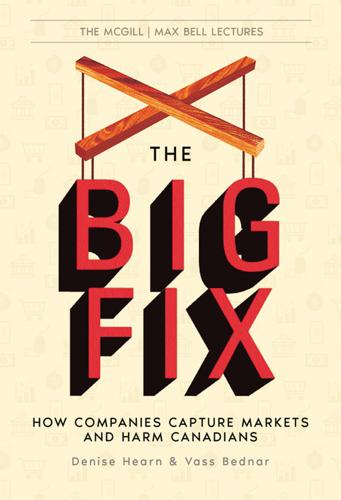
The Big Fix: How Companies Capture Markets and Harm Canadians
by
Denise Hearn
and
Vass Bednar
Published 14 Oct 2024
Marriott International Inc. is the largest hotel brand in the world, with over 8,700 properties in 139 countries.45 It completed a $13 billion merger with Starwood in 2016, which catalysed further consolidation in the industry.46 The biggest hotel brands, however, don’t own most of their hotels outright. They enter into franchising agreements with hotels to maintain an asset-light approach to controlling the industry. Marriott shows thirty-two of its forty hotels and brands it either owns or has licensing agreements with in the following image. Turning to healthcare, only two companies, Telus Health and Express Scripts Canada, a subsidiary of US firm Cigna, account for 80 percent of all private drug claims in Canada.47 They are what are known as pharmacy benefit managers (PBMs), which sit between pharmacies and insurers and manage prescription drug benefits.
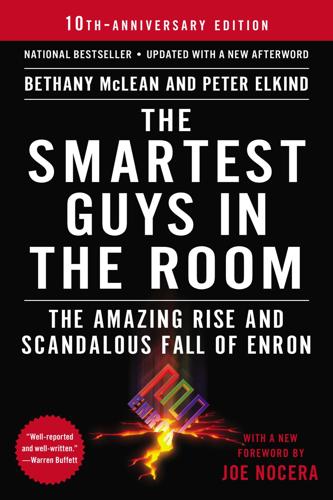
The Smartest Guys in the Room
by
Bethany McLean
Published 25 Nov 2013
Over the next two years, the two became locked in the business equivalent of guerilla warfare. It was a war Rebecca Mark never really had a chance to win. In later years, the media explained the divide between Skilling and Mark as a fundamental difference of business philosophy: Skilling believed Enron’s future lay in what came to be known as his asset-light strategy, driven by brainpower not physical infrastructure. As Mark herself liked to put it: “Oh, Jeff just hates assets.” And of course Mark’s division was nothing but hard assets. But that was never quite right. Physical assets were always the foundation for Skilling’s own business success.
…
“Enron has built a reputation as one of the world’s most innovative companies by attacking and atomizing traditional industry structure,” wrote McKinsey consultants David Campbell and Ron Hulme, in one of many laudatory pieces McKinsey published on Enron. (Hulme was the lead partner on the Enron account.) Many of Skilling’s theories, from “loose-tight” management to “asset light,” came from McKinsey. Enron continued to be a top McKinsey client, paying some $10 million a year for advice, but more importantly for the firm, Enron’s stunning success became a kind of validation of McKinsey’s brilliance. McKinsey got it, too. The adulation suited Ken Lay perfectly. He devoted little time to the actual running of the business.
…
With Azurix clearly in trouble, its directors were meeting more frequently. By November, there were monthly meetings, and they were in crisis mode. These were not polite, Enron-like affairs. Skilling used the meetings to lash out at Mark, arguing that Azurix had to stop spending money and instead follow an asset-light model, the strategy that was working so well for him with EES and Broadband. But neither did Skilling want Azurix to simply hunker down; he demanded growth. “You could just feel the tension between him and Rebecca,” says one former Azurix employee. “Jeff would just attack, attack, attack. And Rebecca was just dancing.”
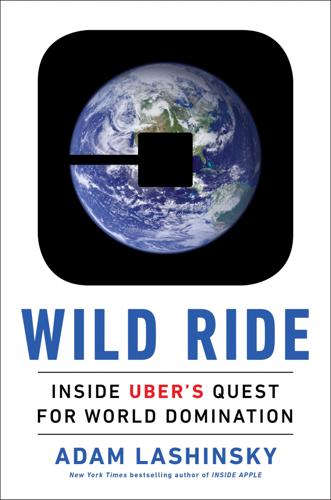
Wild Ride: Inside Uber's Quest for World Domination
by
Adam Lashinsky
Published 31 Mar 2017
Instead, Red Swoosh leverages the massive unused capacity of the desktop to share and deliver content inexpensively, effectively, and legally.” What is remarkable about Red Swoosh’s plan isn’t just its tweak on the commercially attractive aspects of Scour, but how it foreshadowed the so-called asset-light strategy that would be Uber’s secret sauce. Just as Red Swoosh software would push and pull files from personal computers owned by others, Uber one day would connect riders with drivers whose cars represented “massive unused capacity” on the streets of cities. Where Red Swoosh dreamed that the “unused capacity of the desktop PC represents 3,000 times the available capacity at all the CDNs worldwide,” Uber would eventually assemble a fleet it didn’t own that would dwarf the number of cars operated by any competing taxi service.
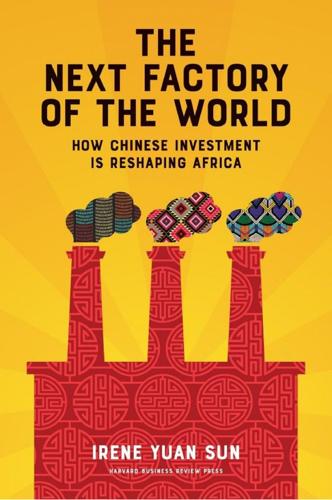
The Next Factory of the World: How Chinese Investment Is Reshaping Africa
by
Irene Yuan Sun
Published 16 Oct 2017
As mentioned in the previous chapter, there had been a trade-policy-oriented scare several years earlier, when it looked like the US Congress might not extend Lesotho’s tariff-free access to the American market under the African Growth and Opportunity Act. Congress did eventually approve the deal, but not before half of the clothing firms in Lesotho had shut down. For relatively asset-light types of manufacturing such as garment production, any change in conditions can spook at least some manufacturers away to other locales. I went across town again to talk about global competition with Marina Bizabani, a government official at the Lesotho National Development Corporation. The purpose of her agency is to attract foreign investment to Lesotho and to keep investors happy.
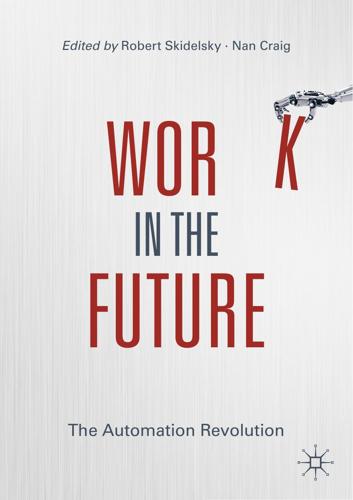
Work in the Future The Automation Revolution-Palgrave MacMillan (2019)
by
Robert Skidelsky Nan Craig
Published 15 Mar 2020
The ‘Uberisation’ of the economy is also often taken to mean that Uber’s peculiar employment relationship with its workers will be replicated and expanded across the entire economy. This belief in an expanding Uberisation is a particularly pernicious myth and I will try to explain why. First of all, what is Uber’s business model? They are what I have elsewhere called a ‘lean platform’.1 They aim to be very asset light: they try to own as little as possible. Uber, for instance does not own the cars; they do not have to pay for fuel; they are not responsible for car insurance or maintenance or anything like that. Even in the core of the business, they do not own massive computer servers or anything. Instead, they rent them out from platforms like Amazon Web Services.
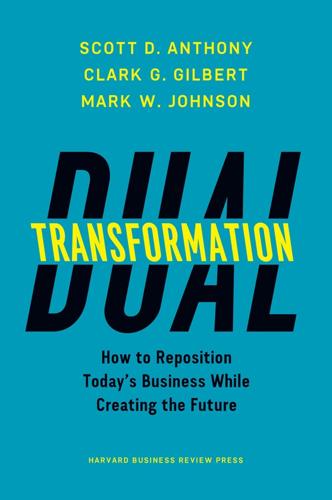
Dual Transformation: How to Reposition Today's Business While Creating the Future
by
Scott D. Anthony
and
Mark W. Johnson
Published 27 Mar 2017
One of its biggest competitors, in fact, was piracy, which by some estimates cost the company almost $1 billion per year in lost revenue. Almost a decade after Salesforce.com’s founding, SaaS was now a well-established model. The recession, which led many of Adobe’s corporate customers to push for more “asset-light” solutions, led Adobe leadership to assess making a bold shift from selling software to offering subscriptions to its leading products. As then CFO Mark Garrett put it, “A recession is a terrible thing to waste.” So in 2008 Adobe launched Photoshop Express as a way to test a subscription-based SaaS offering.
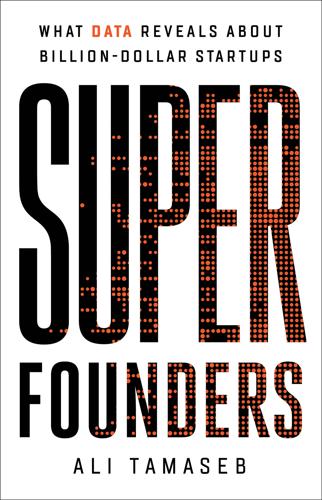
Super Founders: What Data Reveals About Billion-Dollar Startups
by
Ali Tamaseb
Published 14 Sep 2021
High expenditures didn’t always lead to low efficiency, and some capital-intensive startups were in the meantime capital efficient too. Nor is capital efficiency necessarily the same as being capital light. When I looked at the least capital-efficient companies among billion-dollar startups, again I found a mix of software, SaaS, pharma, and physical products. Some otherwise asset-light software companies needed to spend a lot on marketing, customer acquisition, and sales, which increased their capital spent over the long run. Even within SaaS companies, there’s a wide range of capital-efficiency rates. Consider the analysis from Shin Kim, a contributor to TechCrunch, who looked at the ratio of total capital raised divided by annual recurring revenue (ARR) in publicly traded SaaS companies (see the graph “ARR and Cumulative Capital Raised at IPO”).

The Thinking Machine: Jensen Huang, Nvidia, and the World's Most Coveted Microchip
by
Stephen Witt
Published 8 Apr 2025
He became convinced only when he started to consider the cost of not implementing the shaders. The lone guarantee in his industry was that more transistors were coming. As that happened, graphics would get cheaper and easier to render. Huang had managed to stay ahead of his competitors so far, but his asset-light “merchant” business was essentially just a collection of engineers sitting around a Silicon Valley office park. If those engineers weren’t constantly developing new, difficult-to-replicate technology, manufacturers in Asia would start knocking off his chips, and Nvidia would cease to exist. “If we don’t reinvent computer graphics, if we don’t reinvent ourselves, and we don’t open the canvas for the things that we can do on this processor, we will be commoditized out of existence,” Huang later said.

No Ordinary Disruption: The Four Global Forces Breaking All the Trends
by
Richard Dobbs
and
James Manyika
Published 12 May 2015
This trend is only likely to grow in strength as smart mobile technology brings another two billion to three billion people, predominantly from developing economies, into the connected world over the coming decade.24 Cloud technologies are supporting these information trends. Cloud technologies are already making the digital world simpler, faster, more powerful, and more efficient and are changing how companies manage their IT. In the years ahead, cloud technology will continue to spur growth of new business models that are asset light, flexible, highly mobile, and scalable. The technologies will continue to expand, increasingly accompanied by advances in machine learning, artificial intelligence, and human-machine interaction. These changes make it possible for computers to do jobs that it was assumed only humans could perform.
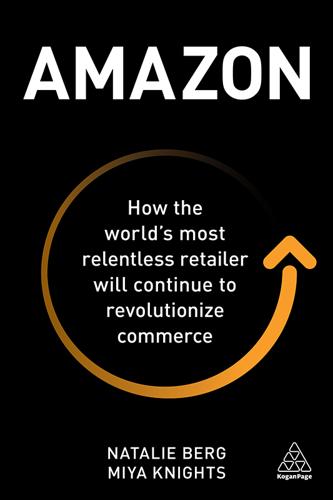
Amazon: How the World’s Most Relentless Retailer Will Continue to Revolutionize Commerce
by
Natalie Berg
and
Miya Knights
Published 28 Jan 2019
In a speech at the Shoptalk conference in 2017, Sarah Quinlan, SVP at Mastercard, noted how the #1 Christmas gift in the US in 2016 was a plane ticket – and #2 was a hotel voucher.50 Meanwhile, Ikea believes that we’ve reached ‘peak stuff’51 and Boots CEO (ex-Dixons Carphone boss) Seb James thinks that ‘shoppers are now only grazing on ownership.’ Later in the book, we’ll discuss how retailers can adapt their stores to cater to the rise in both the sharing and experience economies. While there is no denying that asset-light Millennials place a high value on experiences – with social media in particular fuelling the FOMO (Fear of Missing Out) factor – the shift towards experiential spending is not just a Millennial thing. Mastercard’s Sarah Quinlan summed it up nicely in a 2017 corporate interview: Before, if you acquired more and more goods, you could measure your social status.
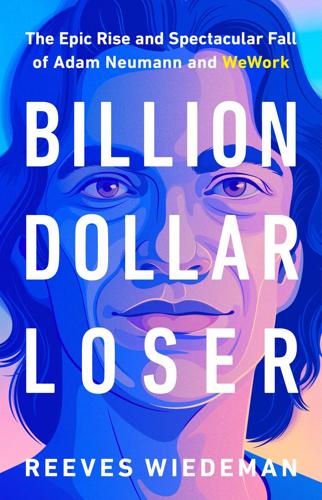
Billion Dollar Loser: The Epic Rise and Spectacular Fall of Adam Neumann and WeWork
by
Reeves Wiedeman
Published 19 Oct 2020
Adam bought homes for his sister and grandmother, paying them back for the rent and tuition they had covered during his early years in New York. WeWork employees could only roll their eyes when Adam and Rebekah spoke about their embrace of the sharing economy and lack of interest in material wealth. “We believe in this new ‘asset-light lifestyle,’” Rebekah told one interviewer, at a time when the Neumanns owned five homes. “We want to live off of the land. I’m like a real hippie.” WeWork’s 2017 Halloween party had another apt theme: The Great Gatsby. With Masa’s money in hand, a calm seemed to settle over Adam. He was set for life, no matter what happened.

The Unusual Billionaires
by
Saurabh Mukherjea
Published 16 Aug 2016
Exhibit 70: Page’s ROCE increased from 25% in FY08 to 42% in FY15 Source: Company, Ambit Capital research. Note: E indicates estimated, not actual, data. Page started operations in 1995 with capital employed of only Rs 1 crore. Given the shortage of capital, the management team kept the business asset-light by using various methods such as leasing land instead of outright purchase, outsourcing capital-intensive processes like spinning, knitting and weaving, and incurring capex only for the final garmenting process. Thomas was strict on costs: ‘We stayed in our Abbaiah Reddy Industrial Area office for as long as it was possible and moved to a new one only in 2014.

Machine, Platform, Crowd: Harnessing Our Digital Future
by
Andrew McAfee
and
Erik Brynjolfsson
Published 26 Jun 2017
At the time of his column, over a million people each day “took an Uber” to get somewhere in one of 300 cities in 60 countries, and Airbnb offered 640,000 different lodging options in 191 countries, ranging from a yurt in Mongolia to James Joyce’s childhood home in Ireland. China’s Alibaba brought an asset-light approach to retailing, an industry where large reach had historically meant ownership of a great many things. Walmart, for example, owned by the end of 2016 more than 150 distribution centers and a private fleet of 6,000 trucks that drove 700 million annual miles to get products on the shelves of 4,500 shops across the United States.

Power Play: Tesla, Elon Musk, and the Bet of the Century
by
Tim Higgins
Published 2 Aug 2021
Others had thought about engineering an electric car, but they had failed to make it profitable. Eberhard was thinking of ways to change the business of making cars altogether, bringing to a hundred-year-old industry the lessons learned from a career as an entrepreneur in Silicon Valley. Tesla would be asset-light, focused on brand and customer experience. He figured the timing was right. * * * — By September 2003, AC Propulsion had completed the conversion car that Eberhard had commissioned and the results made him think they were on to something. The new tzero, with its lithium-ion batteries, had shed a remarkable 500 pounds from its weight.
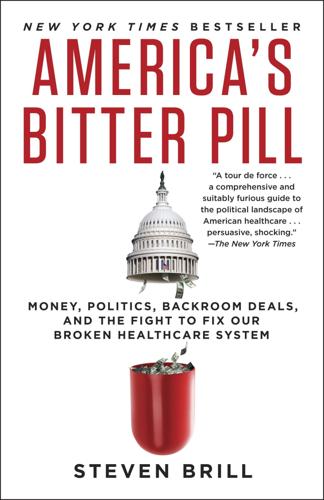
America's Bitter Pill: Money, Politics, Backroom Deals, and the Fight to Fix Our Broken Healthcare System
by
Steven Brill
Published 5 Jan 2015
That meant that Oscar didn’t have to invest in the costly infrastructure that other insurers had, and that its costs would go up only as its number of customers went up. Separate visiting nurse and behavioral health (for illnesses such as drug abuse) services had been signed up, too. “Oscar’s assembly and orchestration of best-in-class vendors creates a uniquely asset-light and nimble insurer which is able to service members in novel ways,” the investor presentation declared. The data related to all of those outside services would be integrated so that the customer, and Oscar, had a complete, up-to-date dashboard of everything going on healthwise in the consumer’s life.
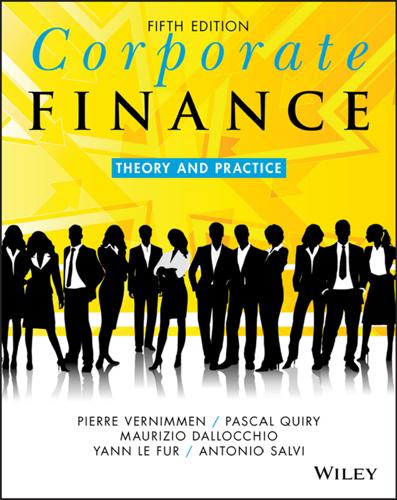
Corporate Finance: Theory and Practice
by
Pierre Vernimmen
,
Pascal Quiry
,
Maurizio Dallocchio
,
Yann le Fur
and
Antonio Salvi
Published 16 Oct 2017
Only full ownership and possibly capital leasing (which is deferred full ownership) allows it to guarantee this flexibility. Moreover, a decision by the landlord not to renew an operating lease cannot be excluded, which is why ownership is often preferred for this kind of asset. Although in the 2000s a number of operations resulted in the splitting up of ownership and exploitation (asset-light strategy), today we are witnessing a reverse trend, with some industrial groups seeking to take back ownership of assets whose underlying activity is performing well (Accor). On the other hand, some real-estate groups that have acquired ownership of buildings are now seeking to take back the business and/or the operation.